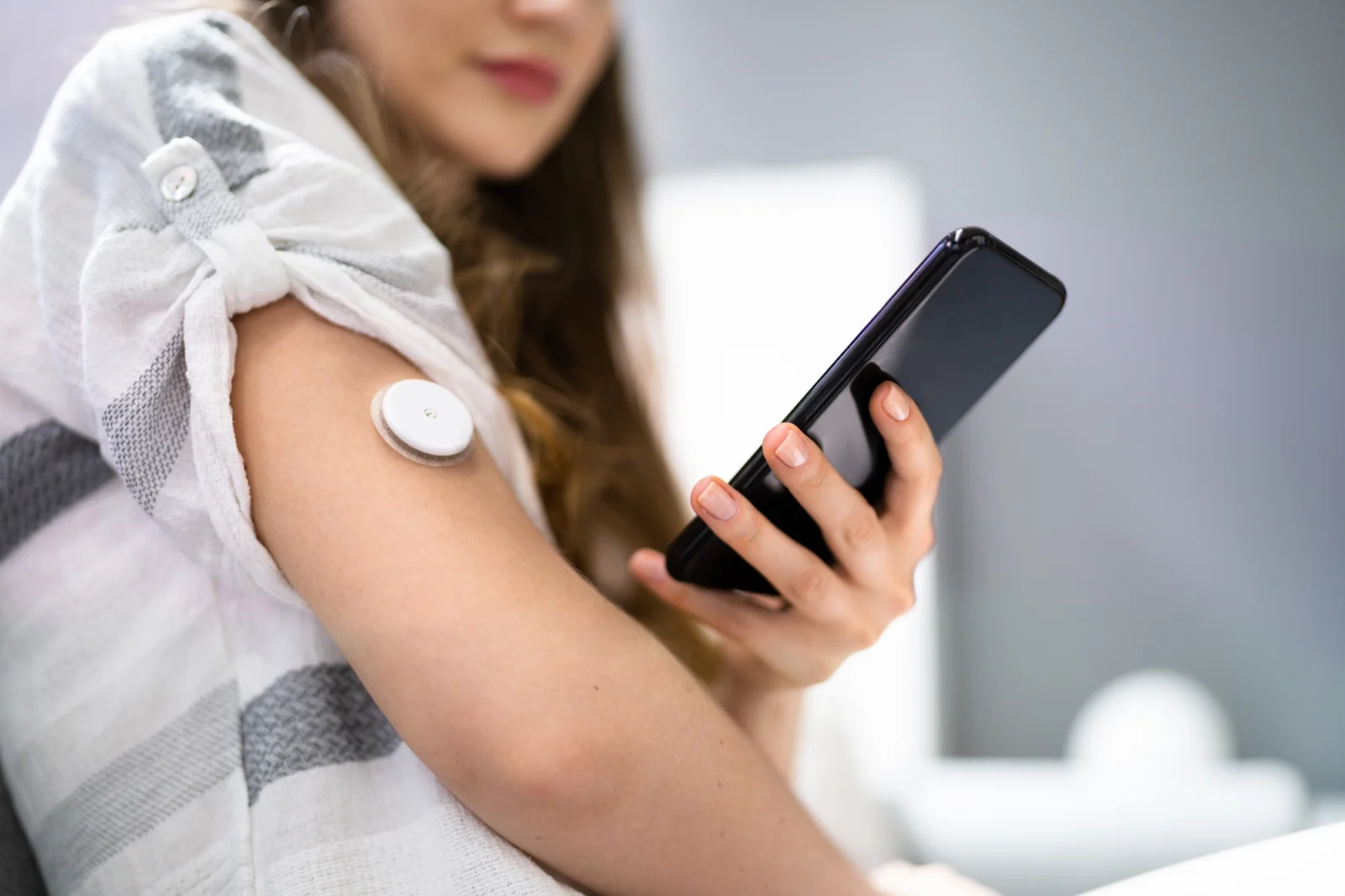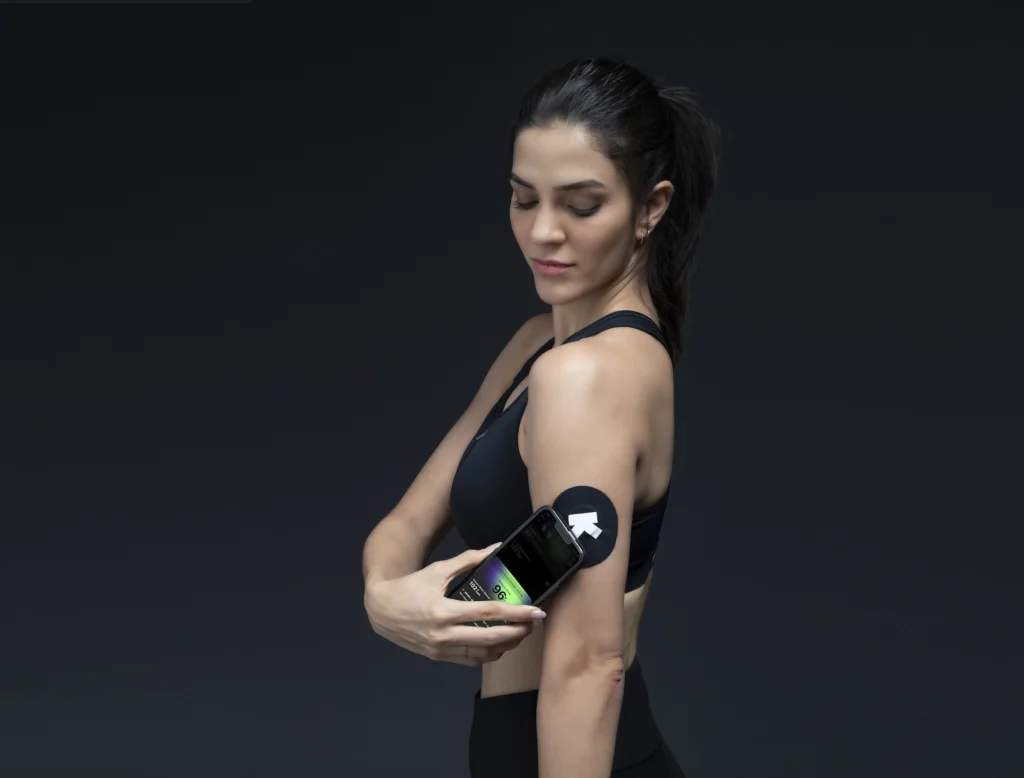How Personal Trainers Can Navigate the Rise of Continuous Glucose Monitors

Athletech offers strategies and best practices for fitness professionals looking to leverage data provided by CGMs
Technology continues to pave the way for innovative approaches to health optimization. Among tools available, continuous glucose monitors (CGMs) offer a window into the body’s energetic fluctuations in real time.
Originally developed for individuals who are managing diabetes, CGMs are becoming more prevalent in the fitness industry, heralded for their potential to uplevel training regimes for athletes and fitness enthusiasts alike.
Recently, the U.S. Food and Drug Administration (FDA) cleared for marketing the first over-the-counter CGM, intended for anyone 18 years and older who does not use insulin, or non-diabetics who want to better understand how diet and exercise may impact blood sugar levels.
With more people now having access to these devices, with the main goal of better understanding health biometrics, what do personal trainers need to know about CGMs, program design and scope of practice?
Education and professional application are keys to integrating CGMs into client experiences.
Understanding Continuous Glucose Monitors
At its core, a continuous glucose monitor involves the use of devices that continuously track glucose levels in the interstitial fluid, providing insights into how various factors like diet, exercise, stress and sleep affect blood sugar levels. This information offers a detailed picture of metabolic health and how the body responds to different stimuli.
CGMs offer the potential for early detection of abnormal glucose regulation, helps in understanding the impact of various foods and physical activities on glucose levels, and can improve physical performance and recovery by optimizing nutritional strategies before, during and after exercise.
Exercise impacts glucose dynamics significantly, making CGMs a crucial tool for athletes and trainers. Understanding the relationship between glucose levels and physical performance can lead to more personalized and effective training programs.
Specifically, in the context of fitness and athletic performance, CGMs can provide valuable insights into how to fuel the body optimally for different types of activities, according to Colleen Gulick, PhD, and owner of Podium Sports, LLC.
In the realm of power sports, where success hinges on the ability to perform maximal muscle contractions repeatedly, understanding glucose dynamics through continuous glucose monitoring becomes crucial, according to Gulick.
“As these intense activities unfold, the body taps into stored glycogen from the liver and muscles, often resulting in a noticeable glucose increase,” she says. “This serves as a signal that the body is fueling muscle contractions adequately. However, to sustain peak performance, especially as glycogen stores start to deplete, incorporating moderate amounts of healthy glucose sources can be key.”
It’s important to manage these intakes carefully to avoid large spikes, which could hinder performance by impairing fat oxidation and gluconeogenesis.

CGMs & Scope of Practice
When it comes to integrating continuous glucose monitoring into fitness training and nutrition advice, personal trainers must be mindful of their scope of practice.
For example, providing general guidance on how physical activity influences glucose levels and overall wellness is within scope. However, interpreting specific CGM data to make detailed dietary recommendations or medical advice, especially for managing diabetes or other health conditions, falls outside a trainer’s expertise.
Jenny Liebl, multi-certified personal trainer, DNA-based fitness coach and senior content developer at the International Sports Sciences Association (ISSA) says that CGMs are a class III medical device originally intended for use in healthcare to monitor blood sugar levels for diabetes and other medical therapies, although they’re now available to the public
“Some fitness and wellness companies sell these devices as part of programs for nutrition and fitness monitoring, recovery practices and more,” Liebl says, adding that the devices are so new on the open market that they can be relatively expensive, “as in several hundred dollars for the device and $200 or more monthly to have the data processed and shared with the wearer.”
Liebl cautions that if a fitness professional is working with clients who use CGMs, or utilizes them in their training strategies, “they must understand that they cannot be used to diagnose or treat medical conditions or identify any types of metabolic or digestive issues,” which still fall squarely with licensed medical professionals, and clients should be referred appropriately.
Liebl also highlights what a fitness professional can do with CGMs, including using the data to better understand how the food someone eats impacts their blood sugar, with the intention of understanding how this impacts energy availability during activity or exercise.
“This data can also help a fitness professional and client understand how various intensities or types of exercise impact their blood sugar, again with the intention of relating that to their energy availability compared to the need during the activity,” says Liebel.
“The data can also help someone create a nutritional strategy around activity (pre-, peri-, and post-workout nutrition) that is most effective for the client and their goals,” she adds.

How To Incorporate CGMs
When incorporating CGMs into fitness training, it’s a good idea to follow best practices that ensure both the efficacy of the program, scope of practice and the well-being of the client. Here’s an overview of some best practices for incorporating CGMs into fitness training programs:
Customization: Personal trainers and health coaches can use CGM data to tailor nutrition and exercise plans, optimizing glucose levels for enhanced performance and faster recovery. The goal is to adjust fueling and workout schedules based on the body’s glucose responses, thus providing a personalized approach.
Informed Adjustments: With real-time glucose monitoring, it becomes possible to adapt workout intensity and duration on the spot, minimizing the risk of overexertion and maximizing the effectiveness of each session.
Empowerment: Supporting clients in better understanding and interpreting their glucose data, in concert with a medical professional, can be empowering. Being informed about how their body responds to various stimuli allows clients to make better decisions regarding their health.
Health Information: Beyond fitness, CGM data can unveil insights into overall lifestyle choices affecting health, such as stress levels and sleep patterns. This holistic view supports comprehensive wellness strategies.
Looking ahead, the future of fitness training and nutrition advice is bright with the promise of more personalized, data-driven approaches. By embracing CGM technology judiciously and ethically, fitness professionals can significantly enhance client outcomes, paving the way for healthier, more informed clients.



